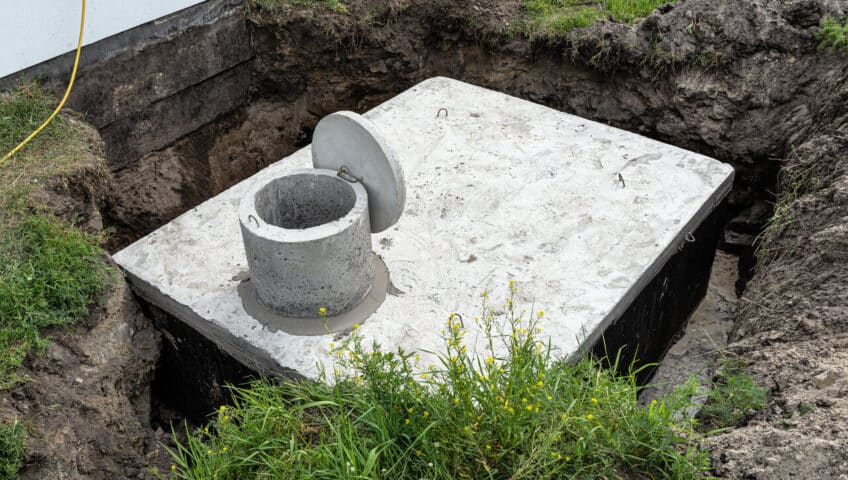At New Wave Earth Works, we understand that designing and sizing a septic field is not merely about installation but achieving lasting functionality and environmental harmony. The longevity of septic systems heavily relies on their initial design, sizing accuracy, and integration with the surrounding landscape.
In this detailed guide, we will delve into the essential aspects of proper septic field sizing and design, ensuring your system not only meets regulatory requirements but also supports sustainable practices. Our eco-construction and landscaping services are dedicated to providing solutions that enhance durability and effectiveness, safeguarding both your investment and the environment for years to come. Join us as we explore the best practices in septic field design for optimal long-term performance.
Understanding Septic Field Capacity and Environment Requirements
Optimal sizing of a septic field begins with a thorough understanding of the system capacity needed to handle daily wastewater flows effectively. In Fraser Valley, where household and commercial activities may vary widely, accurately estimating the daily wastewater generation is crucial. Factors such as the number of occupants, the presence of high-water-use appliances, and seasonal population fluctuations should be considered to determine the daily flow rate, which is typically measured in litres per day.
Moreover, the specific environmental conditions of the Fraser Valley, such as soil type and topography, play a pivotal role in septic field design. Soils with higher clay content may impede effluent absorption, whereas sandy soils facilitate faster filtration. Conducting detailed soil tests, including percolation tests (perc tests), helps in assessing the soil absorption rate, which is imperative for designing a septic field that is neither overburdened nor underutilised.
Site Layout and Septic Field Positioning
Once the capacity and soil requirements are established, the next step is determining the optimal layout and positioning of the septic field within the property. The goal here is to ensure efficient wastewater treatment while preserving the natural landscape and adhering to local regulations. For properties in Fraser Valley, considering factors such as the slope, proximity to water bodies, and prevailing wind directions is important. These factors can influence the dispersal and treatment of effluent.
Strategically placing the septic field downhill from the source (the home or building) allows gravity to aid in effluent movement, reducing the need for mechanical pumping systems. Additionally, maintaining a safe distance from any water wells or bodies helps prevent potential contamination, a critical consideration in Fraser Valley’s diverse and ecologically sensitive environments.
Designing for Longevity and Maintenance
The design phase should not only focus on immediate functionality but also consider long-term sustainability and ease of maintenance. This includes selecting the right type of septic system that suits the Fraser Valley’s environmental conditions and usage needs. For instance, a conventional septic system can be suitable for areas with ample space and favourable soil conditions, while an aerobic treatment unit might be necessary where soil conditions are poor or space is limited.
Integrating features such as access ports and inspection pipes within the septic field design greatly simplifies ongoing maintenance and monitoring. Regular maintenance is crucial to prevent system failures and costly repairs. Effluent filters and tees should be accessible for cleaning, and the layout should accommodate equipment required for sludge pumping without disturbing the field integrity.
Innovations and Sustainable Practices
Embracing innovative technologies and sustainable practices can significantly enhance the performance and environmental footprint of septic fields. One notable innovation is the use of constructed wetlands, which can be integrated into the septic system for properties in Fraser Valley. These wetlands naturally treat wastewater through biofiltration, phytoremediation, sedimentation, and decomposition, providing an eco-friendly effluent treatment solution that also enhances the landscape’s aesthetic and biodiversity.
Moreover, considering the adoption of greywater systems can segregate lighter wastewater (from sinks, showers, and laundry) from heavier effluents and treat and reuse this water for non-potable purposes such as landscape irrigation. This not only reduces the load on the septic field but also conserves water—a crucial factor for sustainability in Fraser Valley.
Regulatory Compliance and Future-Proofing
Navigating the regulatory landscape for septic fields in Fraser Valley involves complying with local health and environmental regulations. Detailed plans and precise installations, as per the British Columbia Standard Practice Manual for Septic Systems, are essential for gaining approvals and ensuring public safety. Future-proofing the septic design by anticipating potential changes in environmental policies or advancements in technology can place property owners at a significant advantage.
Anticipating potential expansions in use or changes in the property’s use can influence the septic field design from the outset. Designing with scalability in mind, through modular components or additional treatment stages, can accommodate future needs without complete system overhauls. This not only ensures compliance over the years but also adds to the property value by aligning with progressive environmental standards.
Final Thoughts on Optimal Design
In conclusion, the design and sizing of septic fields require a detailed, thoughtful approach that combines environmental stewardship with technological insights. For residents and property owners in Fraser Valley, adhering to best practices in septic field design not only ensures compliance and functionality but also contributes to a sustainable future. By integrating innovative treatments and sustainable designs, property owners can achieve a septic system that offers longevity, performance, and ecological harmony, proving beneficial for both the property and the broader environment.
Ensuring Sustainable Success
In mastering the complexities of septic field design and installation, particularly in environmentally-conscious regions like the Fraser Valley, it becomes evident that precision, foresight, and sustainability are not just beneficial but essential. At New Wave Earth Works, we bear the responsibility and pride of crafting systems that not only meet today’s needs but also pave the way for a healthier environment tomorrow. Our commitment to ecological construction and landscaping ensures that every septic field we design is a step towards a sustainable and efficient future.
If you’re ready to design a septic system that ensures longevity, compliance, and eco-friendliness, contact us today and find the civil construction experts you need with us at New Wave Earth Works. Let’s create a system that not only functions efficiently but also conserves the natural beauty of the Fraser Valley. Together, we can achieve a sustainable future, one project at a time.


